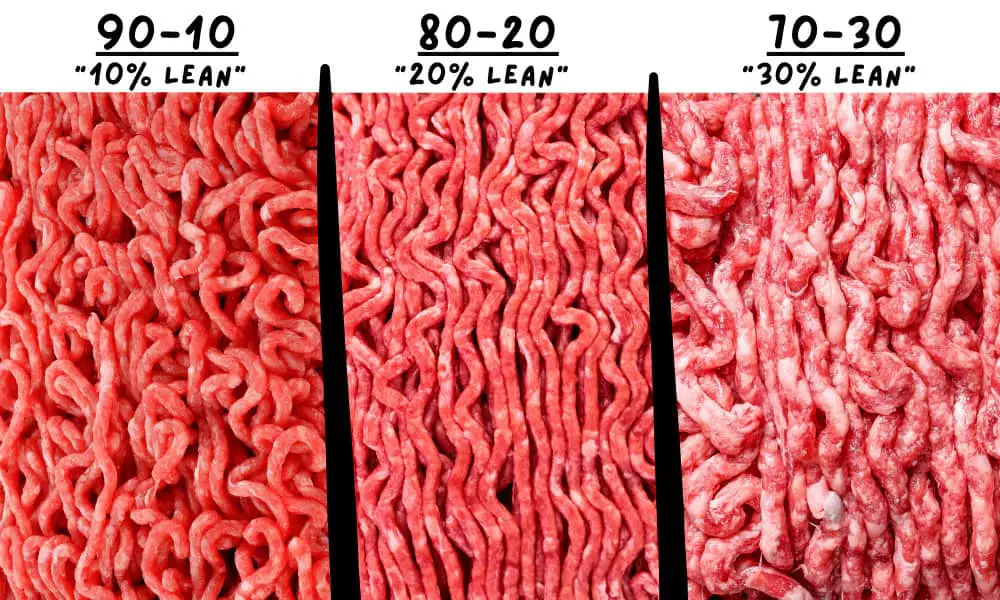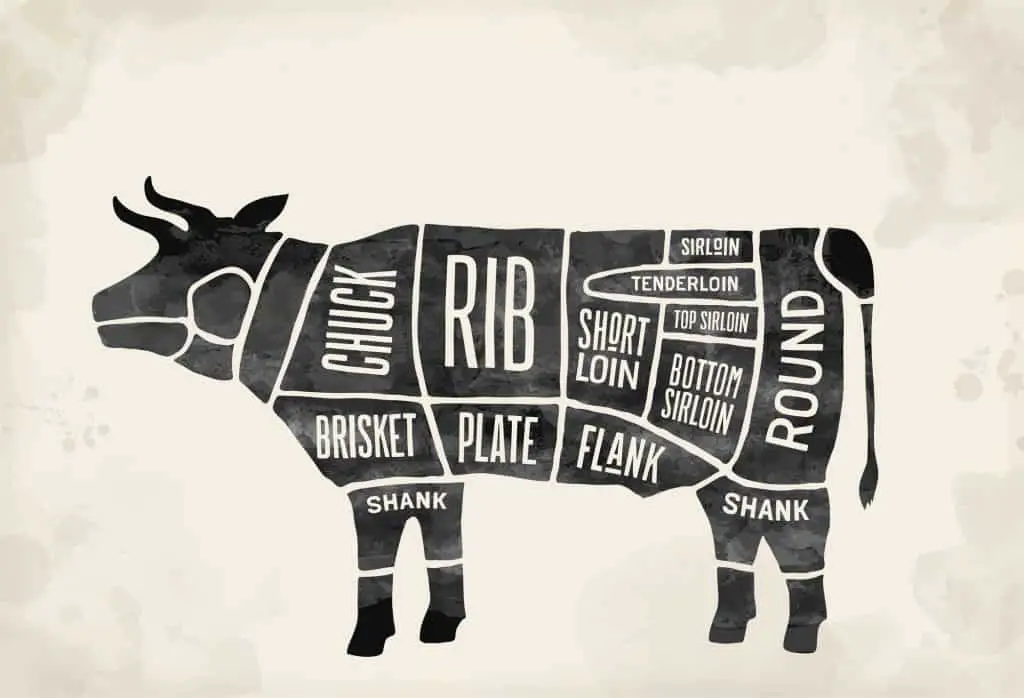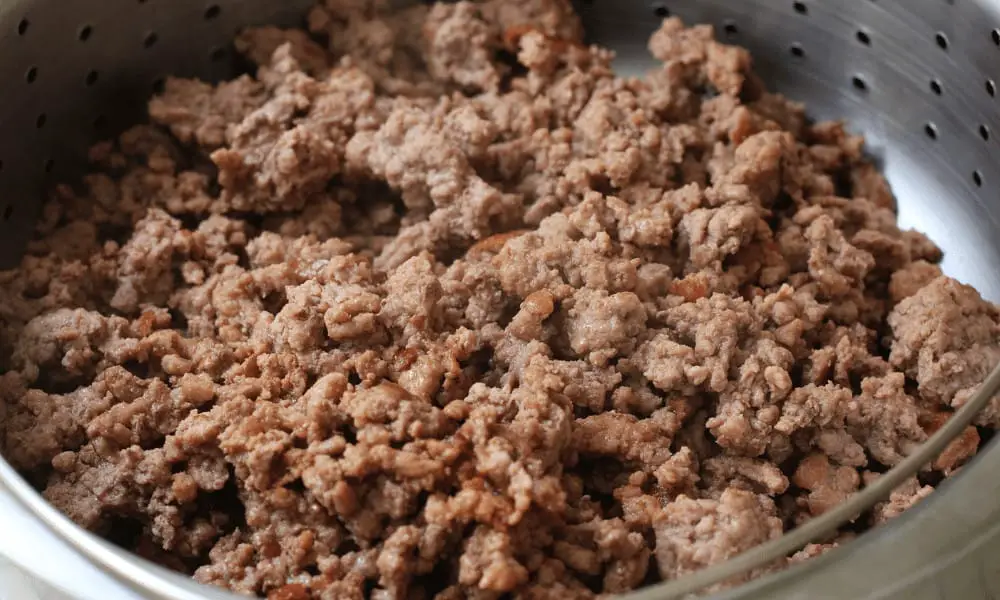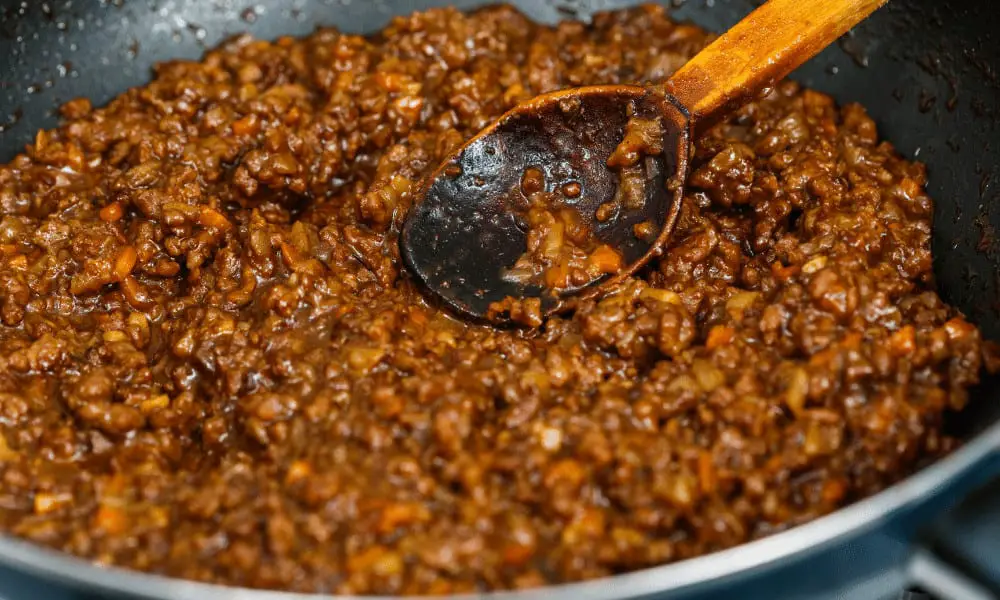In ideal circumstances, ground beef has a pleasing texture. But there are a few explanations as to why your ground beef may have come out chewy rather than moist and tender. This guide will take you through the most common ones.
How Does Ground Beef Become Rubbery?
As the name suggests, ground beef is a larger cut of beef (flesh, muscle, and connective tissue) that has been broken up into smaller pieces.
A typically tough cut of beef, such as brisket, chuck, or round, may become smaller, more tender, and manageable pieces as a result of this phenomenon.
But after the beef has been ground, it can become tough, chewy, and rubbery, just like if you had cooked these beef cuts BEFORE they were ground.
Effectively, if the fat and connective tissue have not broken down, if the meat was of poor quality, if it had too much or too little fat, or if it had lost too much moisture during cooking, the ground beef will turn rubbery.
Here’s everything you need to know.
Why Is My Ground Beef Chewy?

In light of the fact that ground beef is essentially just the parent cut of beef that has been ground into smaller, minced meat, it is prepared using very similar cooking techniques.
This implies that ground beef can become chewy for the same reasons that a steak can. Although it’s not exactly the same, the same principles apply.
These come down to:
- Meat Quality
- Protein-To-Fat Ratio
- Undercooked Ground Beef
- Overcooked Ground Beef
- Inappropriate Cut Of Beef
Let’s examine each of these elements more closely to see how they can affect how chewy, rubbery, and tough your ground beef is.
It almost goes without saying, but the freshness and quality of the raw ground beef have a significant impact on the quality of the cooked ground beef.
This does not imply that the best ground beef must come from a cow that was raised on a throne and only given tiny pieces of gold-plated grass. We’re talking about ground beef here, after all.
But keep in mind that how juicy and tender the meat will be depends a lot on how fresh the meat was before it was ground up, how it was stored, and how long it was stored before being cooked.
The proteins in the meat oxidize with time, and the meat’s overall composition deteriorates.
If you suspect your ground beef is old or off, it’s not worth cooking it. Not only will it be potentially dangerous, but it’s much more likely to come out chewy and rubbery.

The protein-to-fat ratio serves as a gauge for how much of the ground beef is protein, or “meat,” and how much is fat.
This is often measured and marketed by saying %E2%80%9C10% lean, 20% lean, 30% lean etc ”.
Just how much of the ground beef is fat is meant by this “lean” percentage. So, 20% lean means 20% fat for example.
The amount of fat in the ground beef has a significant impact on how you should prepare it as well.
For instance, lean ground beef can more easily become tough and chewy if you cook it for too long.
However, if you don’t cook fatty ground beef for a sufficient amount of time, too much fat will remain and it will also turn chewy.
So make sure to cook your ground beef longer if it contains more fat and shorter if it contains less fat.
Undercooked Ground Beef
You can always undercook ground beef, regardless of how lean or fatty it is.
If you don%E2%80%99t cook your ground beef long enough some of the fat may still remain intact, particularly if it%E2%80%99s 20% or 30% lean
This is another reason why you shouldn’t wash raw ground beef before cooking it because it adds too much moisture, which affects the cook, even though the protein portion may be soft when you go to bite into it.
In order to ensure that any bacteria present in the meat have been eliminated, the USDA recommends that you always cook ground beef to a temperature of at least 160°F. This also applies to ground pork, or if you combine ground beef and ground pork.
Although properly handled and prepared beef tartare can be safe, cooking down the fat without overcooking the protein is necessary for tender ground beef.
Overcooked Ground Beef
In light of this, you might decide to blast your ground beef in order to melt and caramelize all the fat. However, overcooked ground beef can also be chewy, just like undercooked ground beef.
Although this is for a slightly different reason!
Ground beef that has been overcooked and lost all of its fat content can be just as chewy as uncooked ground beef because both contain raw fat.
When the protein in ground beef is overcooked, it becomes tough, loses all of its moisture, and prevents the moisture from being absorbed again. If you’re cooking ground sirloin or another lean ground beef, this could be a serious problem.
The result? A very dry, tough, and chewy mouthful!
The degree of doneness of ground beef matters too, just like if you’re trying to eat a well-done steak!
Inappropriate Cut Of Beef

Really, this issue only ever occurs if you choose to make your own ground beef.
Typically, ground beef is made from chuck, round, sirloin, plate, or flank when you visit a butcher, small grocery store, or Costco.
These beef cuts all share the qualities of being reasonably priced and high in fat.
The presence of fat is essential for ground beef.
If lean beef cuts like New York Strip or Filet Mignon were used to make ground beef, it would still be chewy.
Avoid experimenting when making your own ground beef; instead, stick to the nice, fatty cuts of meat.
No matter if you’re attempting to avoid tough and chewy lamb or even being one of the main causes of tough pulled pork, using the right cut of meat will help in every situation!
How To Fix Chewy Ground Beef

There is one method that, if it’s already too late and you have chewy ground beef, can help restore the chewy ground beef to a palatable state, but it is not completely effective:
- Return your ground beef to a skillet at medium heat.
- Add half a cup of the stock, broth, or sauce of your choice.
- For three to five minutes, cook out the excess liquid after bringing it to a gentle simmer.
- Let cool and serve.
This technique will aid in the meat’s ability to reabsorb moisture and can really make a difference, provided your ground beef wasn’t completely overcooked.
How To Prevent Chewy Ground Beef Next Time
To be perfectly honest with you, the best way to fix chewy ground beef is to simply avoid it in the future.
Follow these steps to prevent chewy ground beef next time:
- Before you begin cooking, make sure the ground beef is at room temperature.
- A tablespoon of oil is heated to medium-high heat in a pan or skillet.
- While it’s heating up, lightly season your ground beef. Don’t add too much salt because doing so will cause the meat to lose more moisture. Remember, you can always add more seasoning at the end!.
- Add your ground beef to the hot pan and begin breaking it up right away with a wooden spoon or wooden spatula.
- But once it’s been divided, only stir it every two to three minutes. You’ll get a little color on the bottom before mixing this way, and the meat will be much better overall!
- It usually takes between 6 and 10 minutes until it is evenly browned, has no pink center, and has a uniform shape. Less time is required the leaner the ground beef.
- Avoid draining the fat, or if you do, don’t drain it completely! This fat is reabsorbed into the meat as the ground beef rests, making the difference between chewy and tender ground beef.
Instead of frying their ground beef, some home cooks and chefs swear by boiling it. But to be completely honest, I don’t even like moist, wet, or soggy meats; I live for the deep brown caramelization of ground beef!
Other Tips For Cooking Ground Beef
Here are some expert responses to some frequently asked questions about ground beef to help you up your ground beef game even further.
Should You Season Ground Beef Before Or After Cooking?

What dish you’re actually making with your ground beef will determine the seasoning. However, in general, adding salt or salty seasonings to raw ground beef will cause it to lose more moisture while cooking. This can be a great way to get some crispy ground beef, but it also has the potential to dry it out and produce tough, chewy beef. If you’re making a wet sauce to go with your ground beef, like with lasagna or bolognese, then seasoning early can be a good way to get some flavor into the beef itself. If you’re making taco meat, or other dry ground beef, then I would hold off on the seasoning until at least halfway through the cook.
Do You Drain Ground Beef?
When it comes to cooking ground beef, this is presumably one of the most contentious issues. Some individuals even wash their ground beef!
Yes, this seems crazy and is totally unnecessary.
The liquid that remains after cooking ground beef is the most delicious liquid you will ever encounter. Yes, it contains a lot of fat and oil, but flavor comes from fat.
I won’t tell you to do either one, but I would unquestionably advise leaving at least some of it in there. This is so that it can flavor the meat and keep it from drying out and becoming chewy while also being reabsorbed.
If you choose to drain your ground beef, make sure to do so before adding any additional seasonings, such as taco seasoning. Additionally, I advise saving some of the beef fat because it makes excellent homemade sauces, stocks, and gravy.
How To Cook Ground Beef So It Comes Out Uniform?
As soon as the ground beef hits the pan, you should begin breaking it up so that it cooks evenly and uniformly rather than in large chunks (which can also be nice!). You can also choose to cut it into pieces while it’s still raw and add them in small batches to the hot pan. However, if you get a good wooden spoon and begin to crush and chop it up when it hits the skillet before it starts to brown, you can get some good, evenly sized pieces. Once it reaches the size you want, be sure to stop mixing it and let it brown on the bottom before further stirring.
Therefore, the meat quality, the cut of beef used, the protein-to-fat ratio, and the cooking of the ground beef are the main causes of rubbery and chewy ground beef.
You can always try adding some tender ground beef back to the pan to simmer for a few more minutes with some delectable stock or sauce if you still have some fairly tough and chewy ground beef.
This can give the ground beef some much-needed moisture again and greatly improve its flavor.
Additionally, some of the remaining fat may continue to break down if your ground beef was undercooked.
Otherwise, simply preventing it from occurring again in the future is the best way to fix chewy ground beef. Knowing what caused it will help you avoid it in the future if you can, with the assistance from above.
After all, practice makes perfect, right?
For more crazy-good meat guides, check out:
How to Brown Ground Beef
FAQ
How do you make ground beef less chewy?
Here is a helpful hint: As a general rule, add about 1/4 teaspoon baking soda to each pound of ground beef and allow the meat to sit for about 15 minutes before cooking. After that, you can cook the ground beef by placing it in a hot, dry pan.
Why is the beef I cooked chewy?
Connective tissue and muscle fiber length are related to chewiness. The term “connective tissue” can refer to the dense layers of gristle found between muscles or the sheets of fibrous collagen that encircle muscle fibers. Either way, connective tissue is chewy. And it only gets chewier when it’s cooked improperly.
Why is my beef patty chewy?
The salt breaks down the cellular structure of the meat, and if the meat is over-mixed, too much myosin is activated, resulting in a very dense and chewy burger. If the meat starts to look a little bit more pale, you’ve gone too far.
Is chewy beef under or overcooked?
Is Chewy Steak Overcooked Or Undercooked? Both. Undercooking naturally tough meat or overcooking tender steak to the point of dryness can both result in tough and chewy steak. Making a tender, juicy meal requires cooking steak at the proper temperature.
